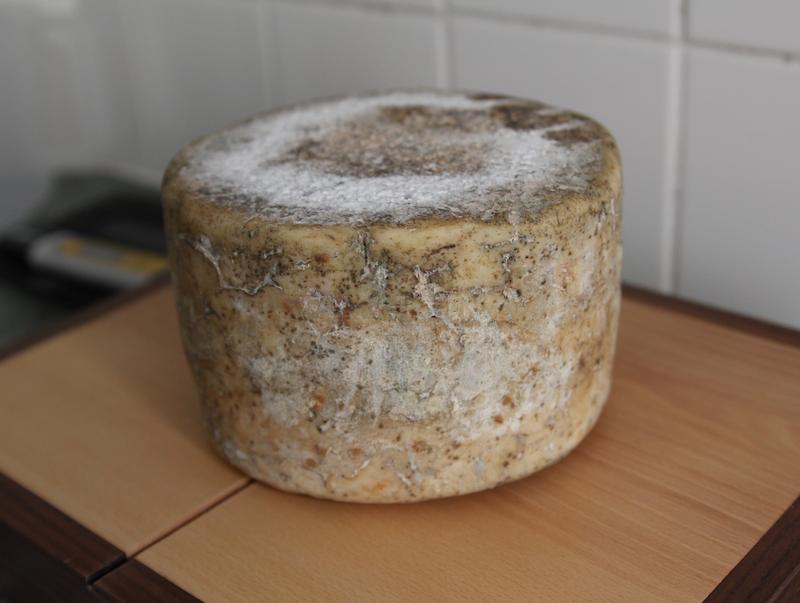For all of you looking to host your own wine and cheese parties, and be honest if you're actually reading this blog that's probably not a huge stretch, here are some tips on finding and purchasing the choice cuts. Purchasing the cheese in the best possible condition is, of course, fundamental to having the ideal cheese platter later. Now, if this cheese and wine party is to be the main course of the evening, and trust me it's possible to fill up on just cheese, bread, and accompaniments, you're going to want to budget 3-4oz or about 100 grams of cheese per person (roughly halve that for lighter fare such as before or after dinner entertainment). This may seem like a lot, but one person will eat 100g of Brie or Camembert before they realize they've arrived at the party. That being said, 100g of Cabra Romero or Pecorino Ginepro will take the spring out of anyone's step, so the trick is in choosing a variety of cheeses.

Ideally you'll find a selection of acceptable cheeses ranging in flavor intensity from the lightest, airiest brie to the most pungent blue or washed-rind cheese. Guests would, ideally, eat the cheeses in ascending order of intensity, given that a couple bites of Roquefort and you won't be able to appreciate any of the nuance of a fresh goat cheese. Varying purchases by country, milk type, raw and unpasteurized, and texture are also good guidelines, but in the end they are just that: guidelines.
When it comes time to commit to your choices there are yet more things to remember. If at all possible get a fresh cut, which is to say ask the stout yeoman behind the counter to take your piece directly off of the wheel. Fresh cuts of cheese are going to be moister and will stay "alive" longer than vacuum packed or otherwise pre-cut pieces, and while some aged cheeses will hold up as near as makes no difference equally well under any circumstances you definitely want your younger and more fragile cheeses cut fresh. If you're getting a fresh cut then you can usually ask to try some before you buy, another bonus and a great tool for horizon-broadening.
If you're buying pre-cut pieces, there are some things to watch out for. Most healthy cheese should fall within a certain range of color and moisture, with discoloration and dry or alternatively slimy being pretty dead giveaways of a cheese past its prime. Some younger cheese will "weep" whey naturally and this is not a sign of a spoiled cheese, but on the whole if the texture seems off either ask a clerk or find a piece that's more uniformly promising. Also, watch out for dried and especially cracked rinds on younger cheeses as this is a sign of a dead cheese.
 |
| Go for it |
 |
| Bad |
 |
| Good |
Mold, a natural occurrence on many cheeses, is a more complicated matter. White mold, be it on a brie or even a cheddar, can be fairly harmless and is not always a sign of the cheese being bad, but should certainly be brought to the attention of an employee. Red mold is a different story and even most brown and green mold should be viewed with caution, though in those cases another dead giveaway will often be present: a strong ammonia smell. This is most often found in the surface ripened and bloomy rind cheeses and is an indication of an unpleasant taste to come. Look for mold where the seams of the packaging meet, even the best packaging operation will mess up now and then and you would definitely rather catch it in the store than at home in the kitchen. Another natural but often worrying occurrence is the tendency of some cheeses to inflate their vacuum sealing like a balloon. This is a result of the normal process of gases being released by continued chemical reactions within the paste, which is after all alive. While it can have adverse effects on the taste of very fresh cheeses such as mozzerella it is nothing to worry about in cheeses with a longer shelf life.
 |
| Delicious but nearing the end |
 |
| Grand |
One more important thing to note, because let's be honest if I've gotten you to read this much you'll read one more paragraph. All of those affinage times serve more purpose than simply impressing your friends, though that's certainly fun too. As we've learned the quality of a cheese is a result of any number of conditions during its production, but the most fundamental being the type of animal and what it's eating. Not surprisingly an animal that's grazing on the lush bounty of spring and summer is going to have tastier more nutrient-rich milk than one eating mostly feed with the occasional pasture day in the winter. Why is this important? If you're eating Brie, a delicate cheese in the best of circumstances, in January, then it was made from milk produced at most a month ago. You don't want December milk Brie. You want May my-cow's-been-munchin'-on-straight-sunshine milk Brie. Depending on the cheese it will matter less, for example most Swiss cheeses can consistently be enjoyed year round, but especially for fresh and young cheeses it's something to think about. By all means still buy such young cheeses in winter, but hardier cheeses will hold you better through the cold months.
If you're at a top rate establishment then chances are there's an employee who can guide you through this whole process, but you know what they say about teaching men to fish. Something about solving world hunger, I think.
Caution
If you're still reading this then you've had a whole lot of cheese talk thrown at you in varying degrees of coherency. You should rest and meditate on what you have learned.

No comments:
Post a Comment